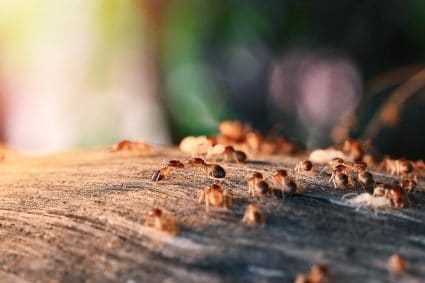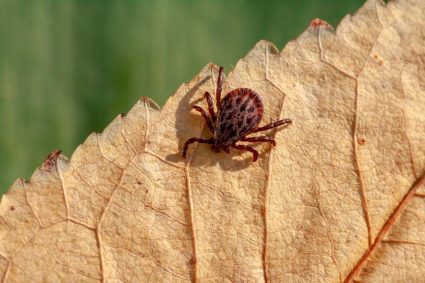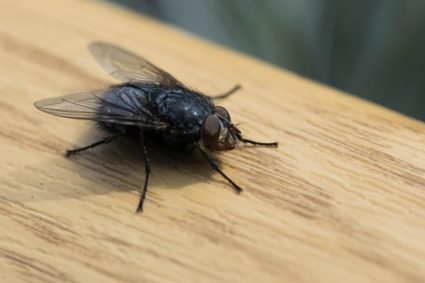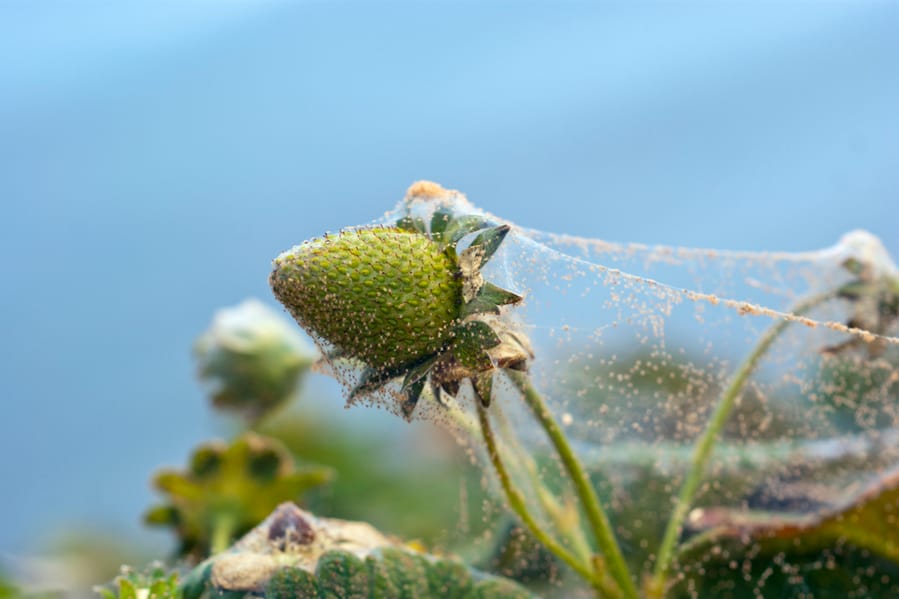
Gardening is one of the most satisfying past times. Moving to a new house with a backyard helped me take up the hobby.
Although things went brilliantly initially, I stumbled into my first obstacle as a gardener when some plants started showing signs of an infestation.
Upon taking a closer look, I identified dark sand-like sprinklings underneath the leaves of the affected plants as spider mites. Although I caught wind of the infestation in its early stages, I didn’t take things likely.
Over the next few weeks, I researched and employed various methods to repel sand mites effectively.
I used many methods to repel spider mites threatening to infect my home garden successfully.
I came across many practical solutions, including applying diluted vinegar, soap, horticultural oil, essential oils, rubbing alcohol, pepper extracts, sprinkling Diatomaceous Earth, introducing beneficial insects, companion planting, and more.
Let’s learn what spider mites are and how to identify, repel, and keep them away from plants.
What Are Spider Mites

Spider mites are tiny insects that feed on plants, causing problems for farmers and gardeners. They belong to the Tetranychidae family, consisting of 1,200 species.
These little creatures are usually found underneath the leaves, weaving protective webs and feeding on nutrients by puncturing into them.
Spider mites take a range of colors, including red, green, yellow, and brown. They operate in swarms and multiply quickly, with their eggs hatching in quick three-day cycles, resulting in colonies and devastating infestations.
The Two-Spotted Mite and Red Spider Mite are the most common mite family members found infesting home gardens and indoor plants.
Most spider mite infestations occur over the spring and summer since they need warm and dry conditions for survival.
How Spider Mites Affect Plants
Spider mites drill tiny holes into plants and feed on chlorophyll, the pigment that allows plants to create energy through photosynthesis. If left undisturbed, spider mites will eventually lead host plants to death, hampering their growth and making them prone to diseases.
How To Identify Spider Mites
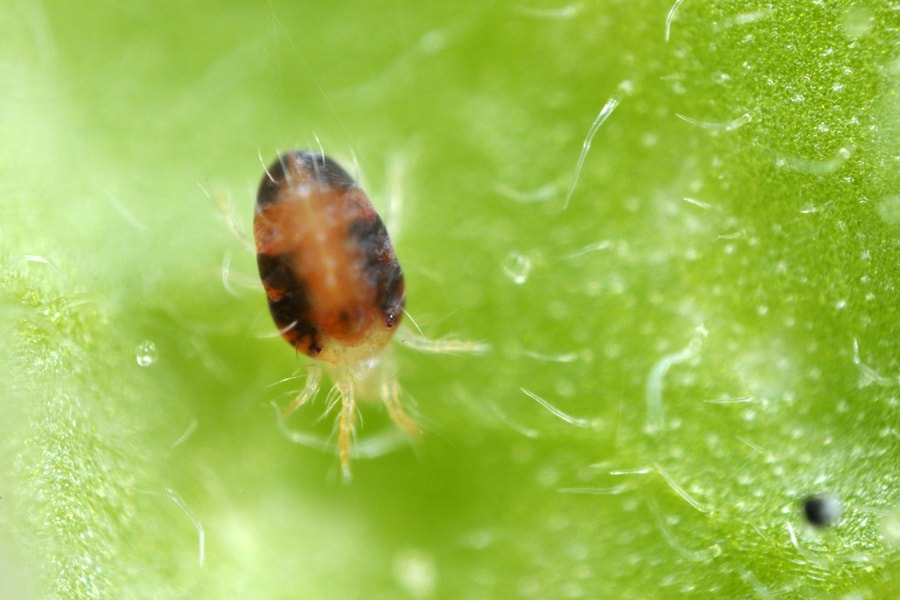
Spider mites are as tiny as grains of sand, making them almost invisible to the naked eye. However, they look like collections of dark, ground pepper or earthy-colored dots underneath or at the bases of leaves.
Slow yellowing or disfiguration of plants is a tell-tale sign of spider mites feeding from them.
I used a magnifying glass to confirm that it was these live critters, with the glass clearly showing their eight legs and ovular bodies.
To get a clearer view with the magnifying glass, hold a white paper underneath an infected plant or leaf and tap the plant causing at least a few mites to fall on the paper.
Spider mites get their name due to the webs they spin to protect themselves from predators. These webs, although feathery, can also be used to identify infestations.
What Repels Spider Mites
Spider mites can devastate gardens if left to thrive. Although they are resistant to most insecticides, I came across many natural methods to repel them, effectively putting an end to their existence in my home garden.
These methods include the use of the following:
1. Vinegar
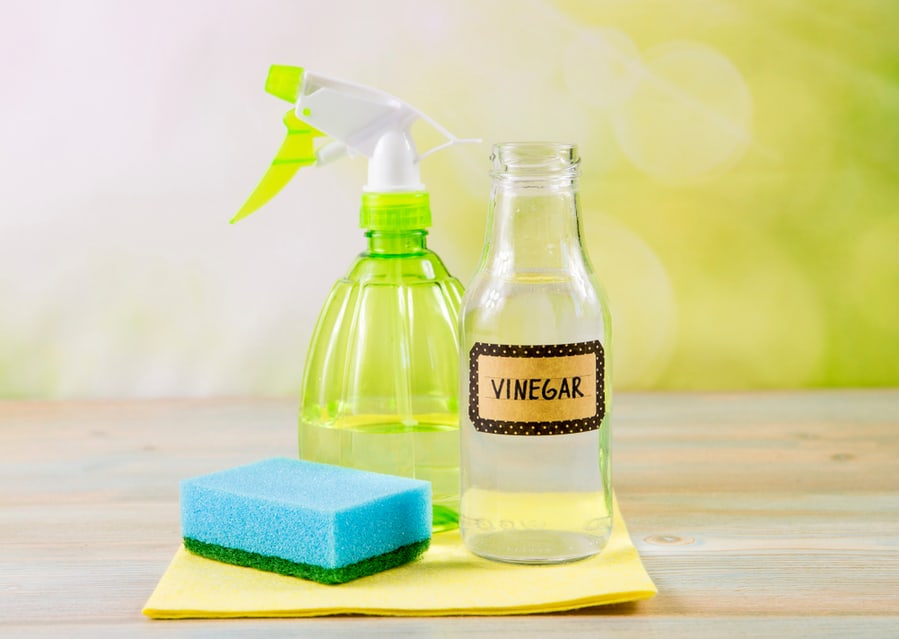
Vinegar is one of the most versatile natural pest-repellants, effectively repelling various pests, including mites.
Combine a few tablespoons of vinegar with a liter of water and spray this mixture on plants to repel spider mites.
Adding some soap to the mix also increases its potency by making it stickier, resulting in the suffocation of mites that come into contact with it.
2. Soap
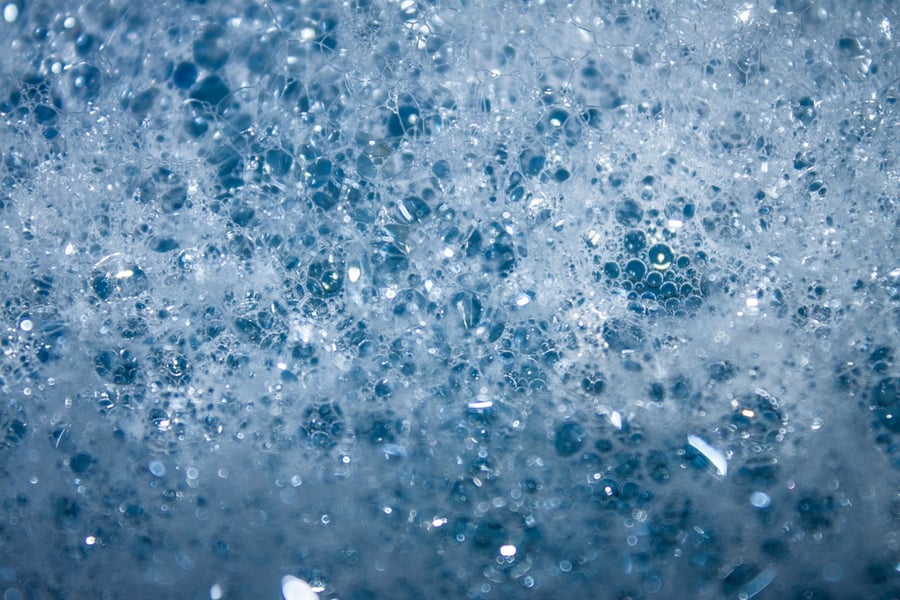
Routine spraying with a soap solution can effectively end spider mite infestations. For example, combining a teaspoon of liquid dish soap and half a cup of water creates a mite-repelling spray.
I sprayed this mixture underneath and at the bases of the affected plants. Unfortunately, the sticky soap suffocates the mites, eventually killing them.
Household soap can harm beneficial insects. Instead, use insecticidal soap that only kills spider mites to maintain a biologically strong and sustainable garden.
3. Horticultural Oil

Spray horticultural oil on the affected plants to effectively kill spider mites sucking the life out of them. Spray both sides of the leaves for better results.
Avoid spraying insecticidal soap or horticultural oil on plants during droughts or high temperatures. Always read and follow the instructions on the labels and store away safely from the reach of children and pets.
4. Rubbing Alcohol

Spider mites that come into direct contact with isopropyl alcohol die of dehydration. Apply rubbing alcohol with 70% isopropyl alcohol concentration onto a tissue, hold the affected plant firmly, and gently wipe it with the tissue.
Dilute the rubbing alcohol with water to a 1:3 ratio if the plant is young or sensitive. Transfer the mixture to a spray bottle and sprinkle it on the infested plant.
Wait a few hours and thoroughly water the plant to remove the dead mites.
5. Natural Predators
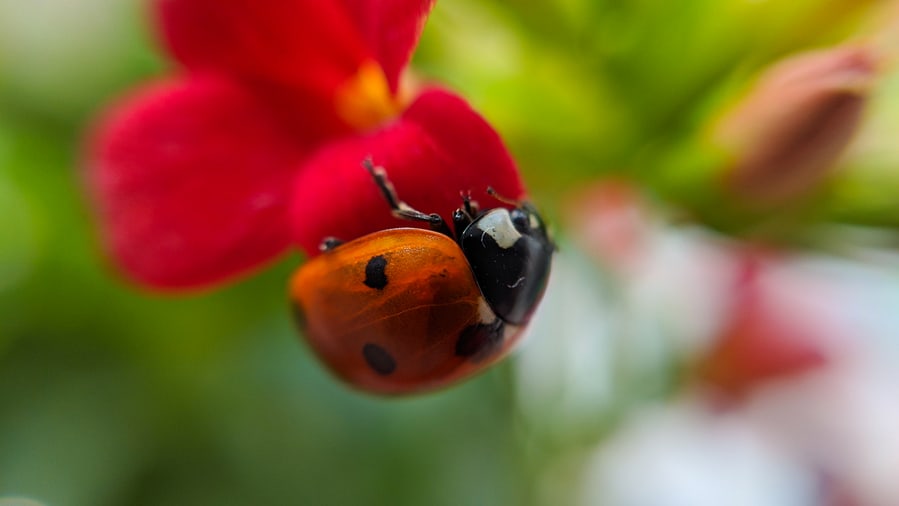
Nature provides excellent solutions for most pest problems, and it’s the same for spider mite infestations.
Getting the help of predators that feed on spider mites, such as ladybugs, lacewings, thrips, and predatory mites, can effectively end spider mite problems in gardens.
These beneficial predators can be attracted or artificially introduced to gardens by purchasing live bugs or eggs. I found this method highly attractive since these predatory bugs gobble up mites in no time without posing a danger to plants, humans, and pets.
6. Essential Oils

Using essential oils to repel spider mites has been popular among gardeners, and a 2017 study confirms the effects of some essential oils for countering two-spotted spider mites.
Combine a few drops of essential oil with a cup of water and transfer the mixture to a spray bottle before thoroughly spraying plants.
Here’s a list of essential oils that kills or drives away spider mites:
- Chamomile Oil
- Coriander Oil
- Neem Oil
- Rosemary Oil
- Spearmint Oil
6. Hot Peppers

A Kentucky State University study reveals that extracts of Hot Pepper fruits kill about 45% of spider mite adults, helping control infestations. Extracts of hot pepper fruits such as Bell Peppers, Jalapenos, Chile, Cayenne Peppers, and other peppers are available at garden stores.
7. Diatomaceous Earth (De)
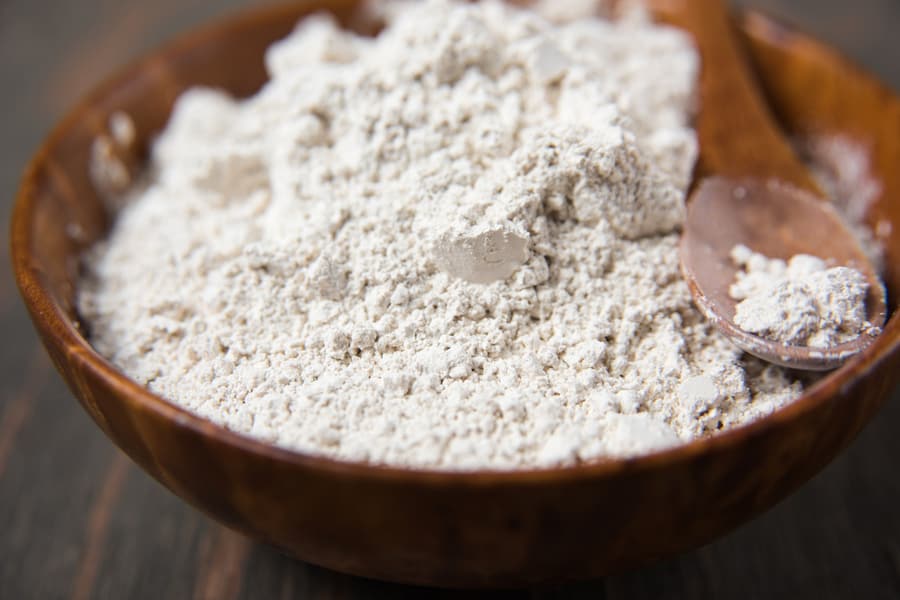
This natural substance derived from fossils of aquatic animals is a popular organic pesticide against many pests, including spider mites.
Purchasing some food-grade DE and sprinkling it on infested plants and soil results in the death of spider mites by dehydrating their exoskeletons.
8. Mite-Repelling Companion Plants
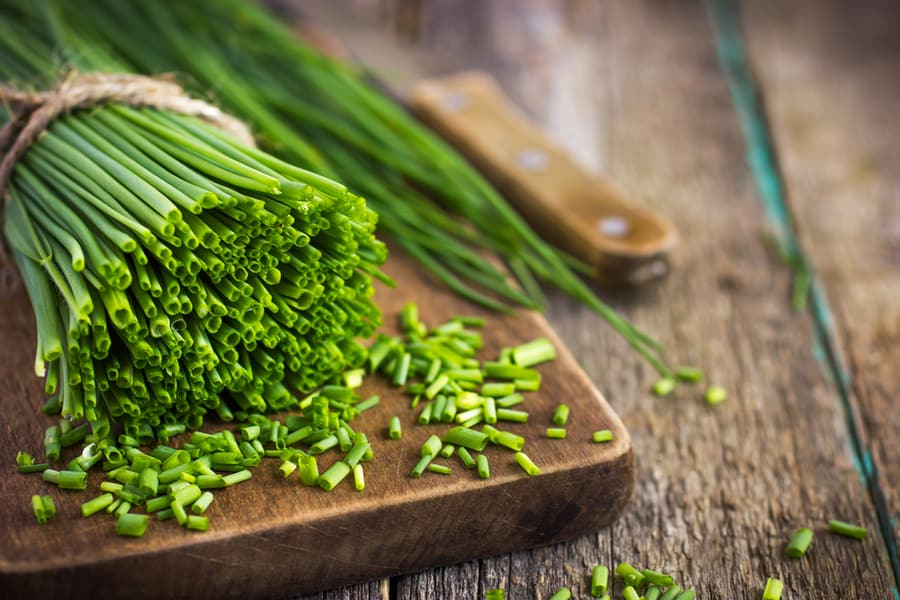
There is a good reason why mite infestations aren’t devastating in nature. This is due to the diversity of plants in natural habitats, with natural pest-repellant plants protecting their more vulnerable peers.
Therefore, gardeners can smartly grow plants that repel spider mites to keep them away.
Here are some plants that repel spider mites:
- Chinese Parsley (Coriandrum sativum)
- Chives (Allium schoenoprasum)
- Chrysanthemums (Chrysanthemum spp.)
- European Dill (Anethum graveolens)
- Garden Rhubarb (Rheum rhabarbarum)
- Garlic (Allium sativum)
- Onion (Allium cepa)
- Peppermint (Mentha x piperita)
- Rosemary (Salvia rosmarinus)
- Shasta Daisy (Leucanthemum x superbum)
According to the integrated pest management office of the University of California, pesticides containing pyrethroids, a substance derived from chrysanthemum flowers, do not repel spider mites.
Such pesticides also harm beneficial predators worsening spider mite infestations.
How To Prevent Spider Mites

Spider mites can cause a lot of damage to plants. Therefore, staying a step ahead is preferable to prevent spider mite infestations rather than dealing with them later.
I was lucky to sense their presence early, preventing a severe infestation. Since then, I have taken the matter more seriously, employing many preventive methods.
These methods Include:
1. Avoid Dust Build Up on Plants
Spider mites thrive in dry and warm environments. Therefore, dust accumulating on plants creates ideal environments for spider mite infestations.
Therefore, prevent dust accumulation on plants by routinely showering them with a steady stream of water.
In addition to removing dust, spraying water at high speed destroys any spider mites feeding on plants by detaching their mouthparts.
2. Keep Plants and Gardens Clean
Dry debris such as leaves, stems, and weeds provides shelter for spider mites, who will later move on to garden plants. Therefore, keep plants and their surroundings clean and spider-mite-free by routinely removing such debris.
3. Maintain Healthy Plants
Stressed or malnourished plants are more susceptible to spider mite damage. Maintaining healthy plants can equip them with immune systems to withstand spider mite damage, giving them a good chance of recovery later.
4. Use High-Quality Soil
Pay close attention to the soil quality. Using sterile potting soil prevents soil-borne pests from infesting gardens.
Nutrient-rich soil paves the way for healthier plants to withstand spider mite damage.
5. Maintain Optimal Moisture Levels
Carefully maintain high moisture levels to prevent providing dry surroundings that are essential for the survival of spider mites.
Water the plants a few times a day during warm and dry weather to maintain higher humidity levels, creating an unfriendly environment for mites.
While watering helps, be careful not to over-water the plants since water stress makes plants more prone to spider mite infestations.
6. Inspect Plants Before Buying
Always ensure that plants introduced to a garden aren’t infested with spider mites. Unfortunately, many gardeners infest their gardens by introducing unhealthy plants playing host to spider mites.
Quarantine newly bought plants for two to three weeks while routinely checking for signs of diseases and infestations before introducing them to the garden.
7. Watch Over the Plants
Routine inspections are an essential quality of a successful gardener. I enjoy watching over the plants I grow and ensuring they are healthy. This enables me to identify any pests, diseases, or malnutrition threatening their well-being.
8. Isolate Diseased Plants
Separate any plants showing signs of infestation or disease from healthy plants immediately. Take steps to nurse them back to good health and only reintroduce them into the garden when they are entirely healthy.
9. Safely Dispose of Infested Plant Matter
Remove plants, leaves, or stems showing signs of disease and pest infestation. Do not compost infested plant matter to prevent reintroducing pests and diseases into the garden.
Summary
Visiting spider mites infesting a few plants in my new home garden gave me a scare. Luckily, I had caught the infestation early, enabling me to take control of things quickly.
I effectively used various methods to repel the spider mites feeding on the plants and took measures to prevent them from returning to my garden.
Frequently Asked Questions
What Is the Best Defense Against Spider Mites?
Maintaining a clean garden, preventing dust accumulation on plants, using high-quality soil, keeping high moisture levels during dry weather, routine inspections, companion planting, and using beneficial insects to control mites are excellent defenses against spider mites.
Applying rubbing alcohol, diluted soap, essential oils, vinegar, pepper extract, and Diatomaceous Earth can also keep spider mites away.
What Is a Natural Repellent for Spider Mites?
Diluted vinegar, Diatomaceous Earth, pepper extracts, and essential oils such as Chamomile Oil, Coriander Oil, Neem Oil, Rosemary Oil, and Spearmint Oil are effective natural repellants for spider mites.
Additionally, attracting natural predators such as lady bugs and lace wigs and companion plants such as Chinese Parsely, Chresenthemums, peppermint, and rosemary also repel spider mites.
What Kills Spider Mites Instantly?
Spider mites that come into direct contact with a 70% isopropyl alcohol solution instantly die. Therefore, spraying or wiping affected plants with rubbing alcohol of a strong-enough concentration helps keep spider mite infestations under control.
Does Vinegar Repel Spider Mites?
Yes, vinegar is a natural spider mite repellant. Dilute a few tablespoons of vinegar with a liter of lukewarm water and spray the mixture on affected plants to repel spider mites.
Adding soap to the concoction increases its effectiveness by helping it stick to plants.

